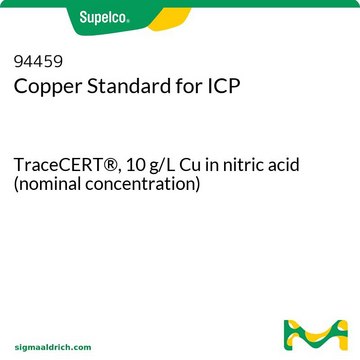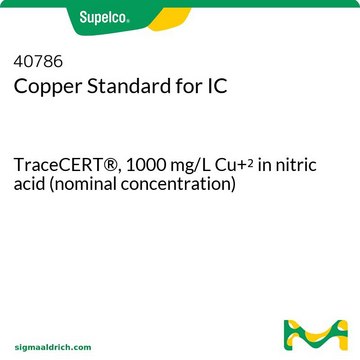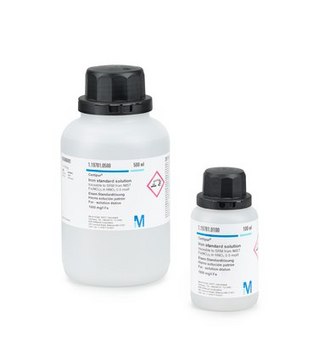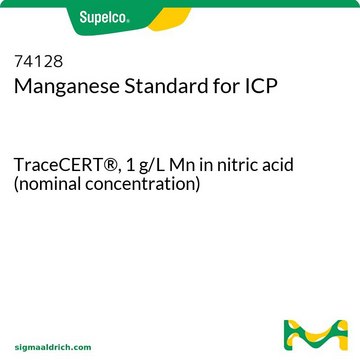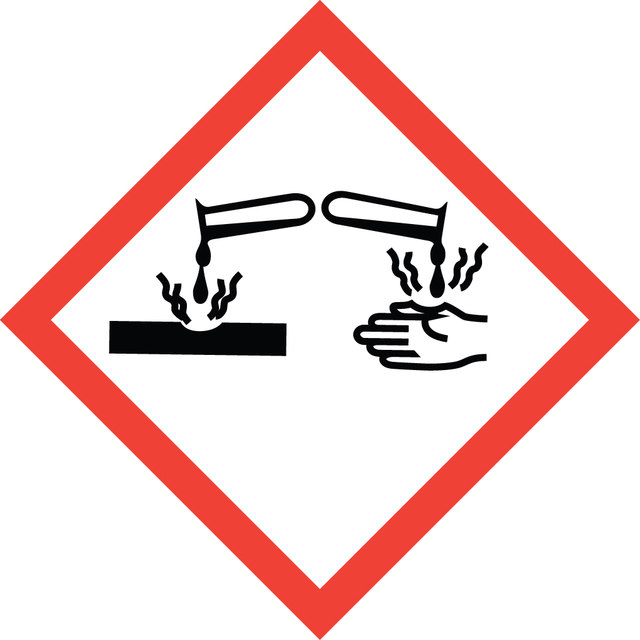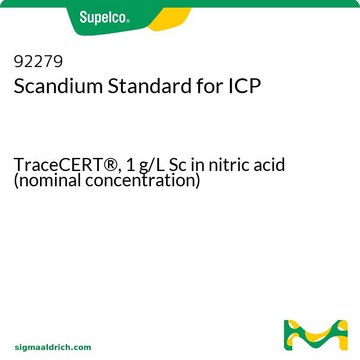L1250
DL-Lactic acid
85 % (w/w), syrup
Synonym(s):
milk acid, 2-Hydroxypropionic acid
Sign Into View Organizational & Contract Pricing
About This Item
Linear Formula:
CH3CH(OH)COOH
CAS Number:
Molecular Weight:
90.08
Beilstein:
1209341
MDL number:
UNSPSC Code:
12352201
PubChem Substance ID:
NACRES:
NA.25
Product L1250 is not currently sold in your country. Contact Technical Service
Recommended Products
Assay
≥85.0% (titration)
Quality Level
form
syrup
concentration
85 % (w/w)
refractive index
n20/D 1.425 (lit.)
pKa (25 °C)
(1) 3.73, (2) 3.79 (L(+)-isomer)
bp
122 °C/15 mmHg (lit.)
density
1.209 g/mL at 25 °C (lit.)
storage temp.
room temp
SMILES string
CC(O)C(O)=O
Looking for similar products? Visit Product Comparison Guide
Application
Lactic acid is used as a reagent in organic synthesis (in the manufacture of adhesives). It is used in the leather, textile, and tanning industries. It may be used as a plasticizer, a catalyst, or an acidifying agent. Lactic acid has even been used as a flavoring agent in the manufacture of tobacco products.
Biochem/physiol Actions
In animals, lactic acid is a metabolic compound produced by proliferating cells and during anaerobic conditions such as strenuous exercise. Lactic acid can be oxidized back to pyruvate or converted to glucose via gluconeogenesis. Lactic acid is preferentially metabolized by neurons in several mammal species and during early brain development.
Preparation Note
This product is miscible with water (10% v/v).
Signal Word
Danger
Hazard Statements
Precautionary Statements
Hazard Classifications
Eye Dam. 1 - Skin Corr. 1C
Supplementary Hazards
Storage Class Code
8A - Combustible corrosive hazardous materials
WGK
WGK 1
Flash Point(F)
235.4 °F - closed cup
Flash Point(C)
113 °C - closed cup
Personal Protective Equipment
dust mask type N95 (US), Eyeshields, Gloves
Choose from one of the most recent versions:
Already Own This Product?
Find documentation for the products that you have recently purchased in the Document Library.
Customers Also Viewed
Dmitry Ter-Ovanesyan et al.
eLife, 10 (2021-11-17)
Extracellular vesicles (EVs) are released by all cells into biofluids and hold great promise as reservoirs of disease biomarkers. One of the main challenges in studying EVs is a lack of methods to quantify EVs that are sensitive enough and
Anna Lischnig et al.
Molecular & cellular proteomics : MCP, 21(9), 100273-100273 (2022-08-03)
There is a long-held consensus that several proteins are unique to small extracellular vesicles (EVs), such as exosomes. However, recent studies have shown that several of these markers can also be present in other subpopulations of EVs to a similar
Olivia Ruhen et al.
Biomedicines, 9(1) (2020-12-31)
There is increasing recognition of circulating tumour DNA (ctDNA) as a non-invasive alternative to tumour tissue for the molecular characterisation and monitoring of disease. Recent evidence suggests that cancer-associated changes can also be detected in the DNA contained within extracellular
Stimulus-response coupling in human platelets activated by monoclonal antibodies to the CD9 antigen, a 24 kDa surface-membrane glycoprotein.
Carroll, R C, et al.
The Biochemical Journal, 266, 527-535 (1990)
Julia Dancourt et al.
Scientific reports, 13(1), 1086-1086 (2023-01-20)
Extracellular vesicles (EVs) are biological vehicles that are thought to mediate cell-cell communication via the transfer of biomolecules from donor to acceptor cells. Repurposing those natural vesicles into therapeutics delivery vectors is a high priority challenge for translational science. Here
Our team of scientists has experience in all areas of research including Life Science, Material Science, Chemical Synthesis, Chromatography, Analytical and many others.
Contact Technical Service


